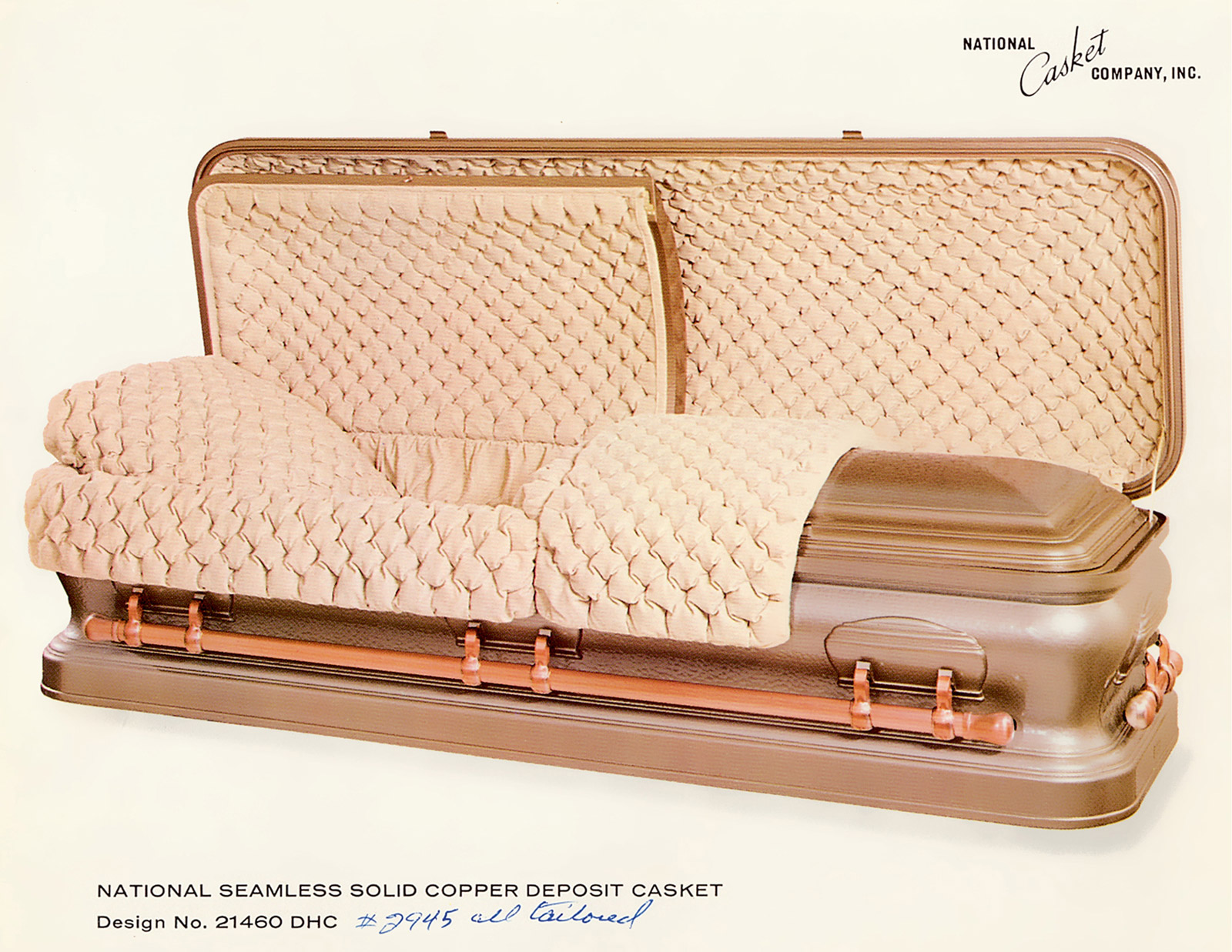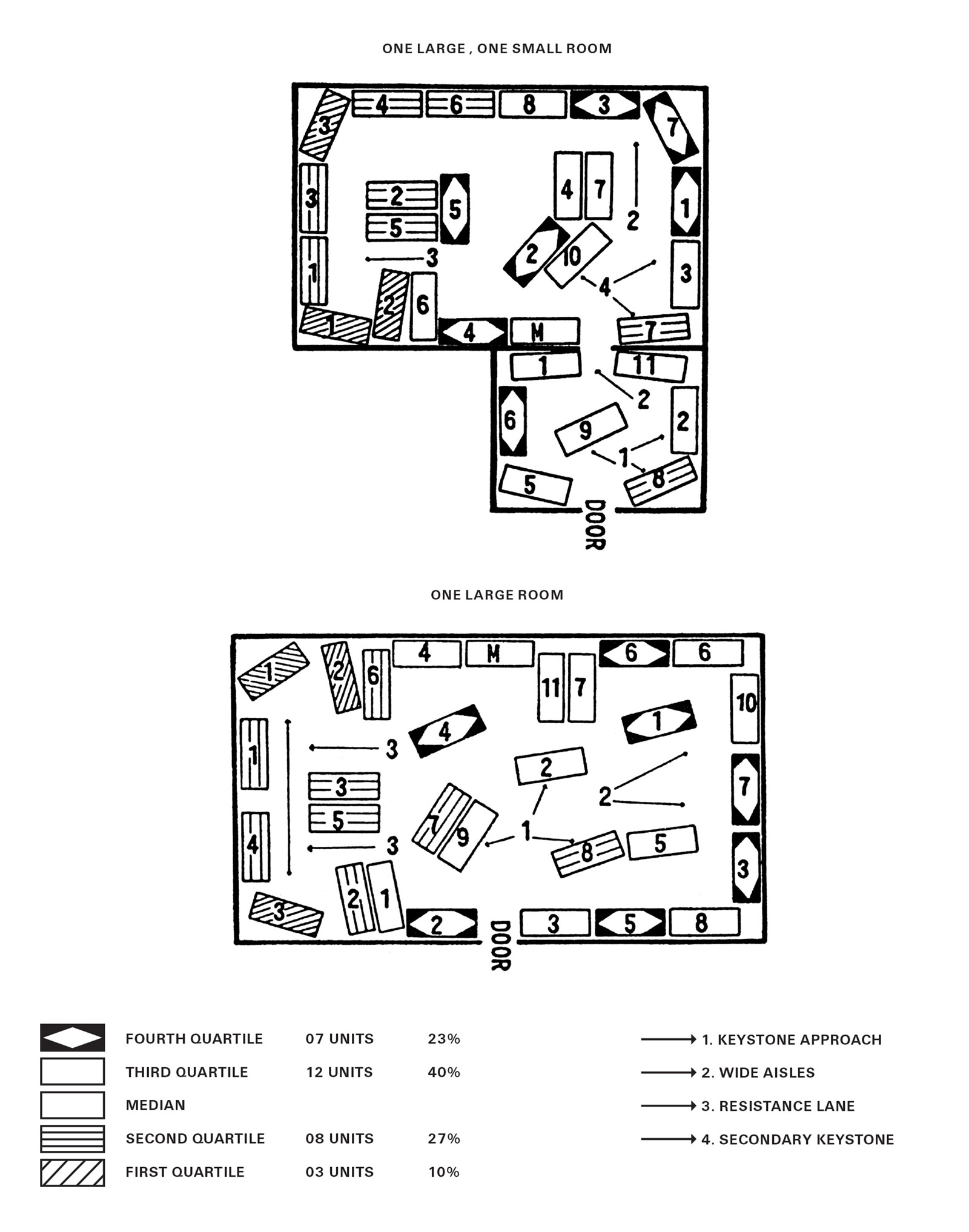Nobody Home
Shame and the gaze of the Other
Renata Salecl
Capitalism brought dramatic changes to the character of funeral rituals in Slovenia. In the past, bereaved family members usually visited a state-run funeral home where they selected from among several basic funeral services and a couple of different coffins or, in the case of cremation, caskets for the ashes. Today, the ritual more often resembles a shopping experience and one that provokes feelings of shame. When the bereaved visit a funeral home, they now must make decisions about numerous details as to how the funeral ritual will be conducted.
Most of these decisions concern objects that will either never be visible or will be immediately ruined. If, for example, the deceased will be cremated, the family needs to decide how elaborate and expensive the coffin used for cremation will be. Then they need to decide how much to spend on the casket in which the ashes will be stored. This casket will later be buried underground. In addition to determining how extravagant the casket will be, other things to consider include flower arrangements at the funeral, musicians for the service, and even the size of the announcement to be placed in the daily newspaper.
Why it is that such a shopping experience provokes shame? When making choices in front of the salesperson in the funeral home, one has the feeling of being exposed to two types of gazes. There is the gaze of the individual who is selling you the services, but one also feels the gaze of a non-substantial other who appears as an abstract agency looking at our choice from above. This abstract other is not the deceased but rather what Jacques Lacan called the Other—the social symbolic structure that governs our lives. The Other comprises society at large, from social institutions to cultural rituals and, especially, the language in which we live.
Lacan’s assertion is that the Other does not exist, but it still functions. In other words, the social symbolic order in which we live is not coherent; marked by antagonisms, it is essentially inconsistent. People nevertheless create their own fiction of a coherent Other, this desire not to see its inconsistency being crucial for their self-perception. Since the subject is also marked with a constitutive lack—i.e. is also inconsistent—he or she tries to find some perception of him or herself as consistent by turning to a fantasy of a consistent Other.

The term shame is often used in conjunction with identity. Someone, for example, might feel ashamed for being poor, a member of a particular nation, and so on. One might also feel ashamed when not acting in accordance with a symbolic mandate with which the subject has identified. For example, a soldier might feel ashamed that he is not acting like a brave member of the army when he is anxiously trying to avoid active involvement in a battle, a father might feel ashamed for not acting like a paternal figure, a judge for not acting like an authority, etc.
The shame one experiences when arranging a funeral ritual triggers similar feelings of failure, of not acting properly. No matter what you do when presented with the choices in the funeral home, you fail. If you refuse to buy the extravagant casket, you will feel stingy, but if you choose the most expensive options, you will feel like you are showing off. Failure is inevitable.
Such feeling of failure can be explained by looking at how Freud linked the experience of shame with other feelings of self-reproach: “The affect of the self-reproach may be transformed by various psychical processes into other affects, which then enter consciousness more clearly than the affect itself: for instance, into anxiety (fear of the consequences of the action to which the self-reproach applies), hypochondria (fear of its bodily effects), delusions of persecutions (fear of its social effects), shame (fear of other people knowing about it), and so on.”[1]
When we are ashamed, what is it that we are afraid that other people will know about? It is not simply that we feel like a failure since we did not in fact perform in accordance with some social expectation or did not fulfill some symbolic role. Shame also confronts us with the acknowledgment that we are never, by definition, able to fulfill these expectations or roles. What we do not want others to know about is that we are in essence always a fraud. We might temporarily take on some symbolic role and bask in the fantasy of its consistence, but sooner or latter we will be exposed in our nakedness, and our identity, marked by a constitutive lack, will be shown to be a sham.

The iconography of shamed individuals often shows them with their heads hanging and eyes downcast. On the one hand, they are avoiding the gaze emanating from others, but they are also trying not to look at the others. For example, in many cultures, one looks down when approaching a figure of authority. What is it that ought not to be seen when confronted with authority? Here we can say that shame also concerns the fact that we are not supposed to see others in their nakedness. To show respect to someone is to avert the gaze, to not look at what lies behind his or her symbolic insignia, and not see the lack that lies behind all authority.
Shame is, therefore, related to the inconsistency of the subject; to the inconsistency of the specific authorities that we deal with in our lives; and to the inconsistency of the Other. Here again we have the problem of visibility. When I feel ashamed, it is not simply that I am try to avoid the disapproving gaze of the Other in front of whom I feel humiliated. By averting my own gaze, I am also trying not to see the fact that the Other is itself also inconsistent, or, better, that the Other, in the final analysis, does not exist. As Joan Copjec points out: “Shame is awakened not when one looks at oneself, or those whom one cherishes, through another’s eyes, but when one suddenly perceives a lack in the Other. At this moment the subject no longer experiences herself as a fulfillment of the Other’s desire, as the center of the world, which now shifts away from her slightly, causing a distance to open within the subject herself. This distance is not that “superegoic” one which produces a feeling of guilt and burdens one with an uncancelable debt to the Other, but is, on the contrary, that which wipes out the debt. In shame, unlike guilt, one experiences one’s visibility, but there is no external Other who sees, since shame is proof that the Other does not exist.”[2]
When societies try to invent new rituals of shaming, it looks as if they are desperately trying to hold on to the fiction of a consistent Other, while in fact they are doing nothing else but exposing its inconsistency. This is often most visible in how shame is used in judicial systems. In China, for example, when a criminal is to be executed, his or her family is asked to pay for the bullet. This demand in part relies on the shame that the family feels to have a criminal in its midst. Paying for the bullet thus functions as symbolic compensation for the criminal’s deeds. However, this act can also be understood to mean that the judicial system cannot act like a full authority and needs the family’s “help” in meting out punishment.
Other societies are also trying to introduce more shame into their penal systems. The British government, for example, has commissioned research on how best to involve communities in the fight against crime and raise public confidence in the criminal justice system. The proposal written by Louise Casey, the former head of Tony Blair’s Respect Task Force, suggests that offenders sentenced to community punishment be put to work wearing high-visibility bibs that identify them as criminals.[3] Here, we have a particular demand to make the criminals visible, to expose them to the public, and, of course, to make them experience shame in regard to their crime. The observing public is supposed to feel satisfaction in seeing that criminals are punished in a socially useful way instead of simply biding their time in a prison. But the judicial system does not simply make shamed criminals visible to the public; it also uses them to divert the public’s gaze from itself—from its own utter failure as the authority that is supposed to deter crime.
- Sigmund Freud, “Draft K – the neuroses of defence,” in “Extracts from the Fliss Papers,” in Standard Edition, ed. James Strachey (London, The Hogarth Press and the Institute of Psychoanalysis, 1953–1974), vol. I, p. 224.
- Joan Copjec, Imagine There Is No Woman: Ethics and Sublimation (Cambridge, Mass: MIT Press, 2004), p. 128.
- The Times, London, 16 June 2008. Available at www.timesonline.co.uk/tol/news/politics/article4144470.ece [link defunct—Eds.].
Renata Salecl is a researcher based in Ljubljana, Slovenia. Her books include On Anxiety (Routledge, 2004), (Per)versions of Love and Hate (Verso, 2000), and The Spoils of Freedom: Psychoanalysis and Feminism After the Fall of Socialism (Routledge, 1994).
Spotted an error? Email us at corrections at cabinetmagazine dot org.
If you’ve enjoyed the free articles that we offer on our site, please consider subscribing to our nonprofit magazine. You get twelve online issues and unlimited access to all our archives.